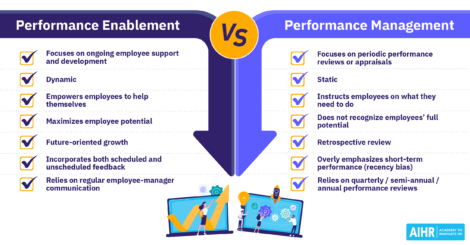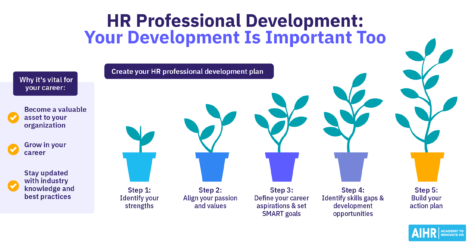Behavioral Observation Scale for Performance Evaluation: What, When, and How

The behavioral observation scale is a popular performance appraisal method because it is reliable and easy to use. It is different than an outcomes-based performance appraisal because it focuses on behavior rather than results. What exactly is a behavioral observation scale, its advantages and limitations, and how to create a BOS? Let’s get started!
Contents
What is a behavioral observation?
What is a behavioral observation scale?
When to use a behavioral observation scale?
Behavioral observation scale example
Advantages and limitations of BOS
How to create a behavioral observation scale
What is a behavioral observation?
You can’t always know what someone is thinking, but you can see how they act. When used in performance appraisals, behavioral observation can give reliable information on how an employee behaves.
The concept of behavioral observation comes from psychology and relies on managers or other observers to judge the frequency of an employee’s behaviors. These are usually linked to company values and focus on behavior rather than results.
This system can be controversial. For example, focusing on psychological methods and a “systematic recording of behavior by an external observer” means a higher degree of subjectivity is involved.
For employees who work remotely, it can be difficult for a manager to know just how often coworkers help each other or how they treat people daily. There can also be some disconnects under this system.
For instance, if we have two salespeople evaluated based on outcomes only, the person who sells the most product will have the highest rating. Under a behavioral observation scale, the top-rated person may not be the one who sells the most but the person who exhibits the desired behavior.
In theory, you should map the behaviors to desired outcomes, and you could assume that people who follow up with clients are more likely to sell than those who don’t. But, that is not the case in every situation.
What is a behavioral observation scale?
A behavioral observation scale measures behaviors that you want the employee to achieve. The scale portion means it’s not a yes/no situation but rates the employees on a scale. For instance, a five-point scale would ask the manager to choose among the following for how often an employee exhibits each behavior.
- Almost never
- Seldom
- Sometimes
- Often
- Almost always
Note that never and always are not options, as those are unrealistic in most behaviors. The scale entails multiple desired behaviors and the scores are then totaled to produce an overall performance score.

You can weigh different behaviors based on the desirability of the behavior. Companies can have general scales that apply to all employees. For instance, with regards to your organizational values, you would want to identify particular behaviors behind each of those values and evaluate every employee.
But, you will want job-specific behaviors as well. A front-line retail employee would have something like “Demonstrates customer service by greeting each customer” on their BOS, but an accountant in the same company would not. (As the accountant doesn’t see customers.)
BOS for performance appraisal was developed by Gary Latham and Ken Wexley in the 1970s.
This appraisal method varies from the Behaviorally Anchored Rating Scale (BARS) but is very similar. With a BARS, you define specific behaviors for each level of performance. It can be more accurate but must be tailored to the job precisely, which, in turn, takes time.
For instance, if we consider the front line retail employee, the BOS looks like this:
Demonstrates customer service by greeting each customer
- Almost never
- Seldom
- Sometimes
- Often
- Almost always
With a behaviorally anchored rating scale, it would look more like this.
Demonstrates customer service by greeting each customer
- Before they leave the store
- Within two minutes of entering the employee’s area
- Immediately upon entering the employee’s area
- Immediately, and with a smile
- Immediately, and with a smile and a sincere offer of help
You can see that this gives clear guidance to the employee, but it also requires an in-depth understanding of the position. Even within a retail environment, you may need to make different scales based on the job. A person at the high-end jewelry counter may only have one customer at a time and should offer a higher level of customer service than the employee in children’s shoes, who often has ten or more customers at the moment.
Another well-known type of appraisal method is the graphic rating scale, where a number of desired traits and/or behaviors for a particular job are listed and rated using a numbered scale (e.g., 1-5, or 1-10).
When to use a behavioral observation scale?
With many people working remotely, you often hear companies talk about how they can no longer use face time to judge someone’s performance. After all, you don’t generally see people who aren’t working in the same space. (Forcing employees to keep their cameras on all day is not a good solution.) But, that doesn’t mean you can’t use a BOS measurement instrument to evaluate employees.
It works better for some jobs than for others. For instance, jobs without clear, measurable results are often better evaluated by a BOS than a results-only scale. How do you determine the number of lawsuits your company avoided by having good HR? It’s hard to say. But, looking at BOS can help you identify strong performers.
In positions where productivity is clearly indicated (like a contact center), BOS may not be the best way to measure the general performance of an employee. Still, you can use it along with outcome monitoring. You can note the number of complaints an employee resolved and use BOS to see how they live by the organizational values and provide feedback on how they can improve this.
Behavioral observation scale example
For instance, instead of rating an employee on the number of sales they closed, managers rate an employee on the day to day behavior, with questions such as:
Rate the employee on a scale of 1 to 5 (almost never to almost always) on the following statements:
- Keeps customers updated with new product updates
- Communicates with the team about sales leads
- Helps coworkers follow up with potential clients
- Demonstrates the value of diversity and inclusion by treating all coworkers kindly
- Fills out sales records accurately and on time
- Provides value by responding to internal requests promptly
You can see how this behavior-oriented thing focuses on what someone does rather than their results. A results-oriented employee evaluation would talk about numbers more than behaviors.
If you want to be less subjective, you can consider the Behaviorally Anchored Rating Scale (BARS). Then you’d see examples like this:
- Keeps customers updated with new product update
- 1. Contacts customers once per quarter.
- 2. Contacts each customer when a relevant product update occurs
- 3. Builds relationships with customers with regular contact in addition to product updates.
- 4. Anticipates customers’ future needs, keeps them informed about regular updates, and helps solve their current issues.
- 5. Manages the customer relationship so that the customers’ needs are met without the customer having to request information. Has a strong understanding of customers’ needs now and predicted needs in the future.
- Communicates with the team about sales leads
- 1. Sends written communication at least monthly documenting leads
- 2. Alerts coworkers on leads in their areas within a short period after getting the lead
- 3. Works with coworkers to approach potential leads
- 4. Helps coworkers create handoff plans so that no leads are missed
- 5. Works with coworkers to find, share, and develop leads so that everyone benefits.
You can see that the BARS method gives you a more accurate comparison of coworkers but must tailor the questions to the job. However, as we’ve already mentioned, developing a BARS is time-consuming and expensive.
Advantages and limitations of BOS
As with any other performance appraisal method, there are certain advantages and limitations to using a BOS.
Advantages
- Suitable for assessing the performance of employees whose jobs cannot be evaluated based on productivity alone – Levels of performance for some jobs are difficult to quantify
- Time-efficient, compared to BARS, it takes less time to develop
- Possible to compare results of different employees
- You can compare across departments for company values (this is a good tool for evaluating leadership–how do their people behave)
Limitations
- Difficult to keep track of employee behavior within larger teams
- Requires an active and attentive manager
- It might lack detail
- It can be pretty subjective, which can result in unfair results.
How to create a behavioral observation scale
In collaboration with managers, HR can create a BOS for each job or a general evaluation for the entire department or company. For a company-wide BOS, you’ll focus on your company values. Here are the steps to developing a value-based BOS.
- Identify your company values.
- Ask, “What does this value look like in action”? (This is the hardest thing. You can say, “Our company value is integrity,” but what does that look like? How to you want your employees to represent this value?)
- Determine specific behaviors for each value.
That seems simple, and if you have the values identified, it can be! But, for a job-based BOS, it can be a bit more complicated. Here’s the process:
- Identify critical tasks for a job. Remember, these are not values or feelings but actual tasks an employee can do.
- Include behaviors related to the key tasks of the given job. These should be observable behaviors that impact the employee’s performance on the job. For instance, you may value friendliness among your front-line personnel, but you would write it as “Greets customers when they come in the store.” It’s harder to measure “friendliness” than it is to measure “greetings.”
- Make sure that each required behavior reflects organizational values. Sometimes this can be difficult. A company’s value is communication, but if your company promotes people who hoard information, then you’ll see a mismatch.
A good BOS (or BARS) will have a value section that cuts across departments and a job-focused section. That allows managers to evaluate people fairly and gather general performance data for the company.
Make sure to use the BOS technique as part of the appraisal process, rather than an ultimate performance appraisal tool.
Over to you
If you want to make your behavioral observation scale effective in evaluating performance, you need to tailor it to jobs or job families. That way, you’re making sure that it accurately reflects your employees’ performance and can help improve it.
Weekly update
Stay up-to-date with the latest news, trends, and resources in HR
Learn more
Related articles
Are you ready for the future of HR?
Learn modern and relevant HR skills, online












